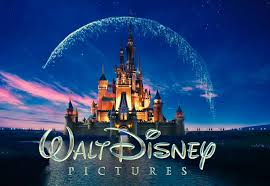Everything looks real and seems real, yet it isn’t real?
Reality can easily be re-constructed given the right idea, imagination and enough power and control, anyone can create a representation of the world. America is built to symbolise the idea that you can create anything and introduce it to the world as something which can be seen as better than what already exists and better than the real. Disneyland is the epitome of a creation that symbolises real life and merges it with fantasy to escape any origin of reality.
When you enter Disneyland, you leave any form of reality behind and walk into a dream, a simulation of what the world may become, ‘an advert of the real’. It feels as an escapism where you can leave any form of cruelty from the ‘real’ world behind and embark on the fantasy thrill it has to offer. The idea of, ‘if only life was like the movies’ is a common phrase, so if people were able to choose a reality where life imitated art they probably would. This is what Disney has produced, fantasy that imitates reality, which then imitates fantasy.
In agreement with Florian Mayer from the The Disney theme parks: home to the mouse, Hyperreality and consumerism thesis (2007) “it can be said, that postmodern utopias like the Disney parks are idealised spaces of commodification that have emerged to address the needs of individuals who are increasingly marginalised from the means of production and each other.” It can be suggested that, Disney creates the ‘perfect’ family life and society especially within their films and there animated films. The idea of a husband and a wife, with two children, living in there grand house, surrounded by a white picket fence, the ideal suburban lifestyle of a traditional view on society. The problem it possess is the idea that it is taking a traditional way of thinking and placing it into a postmodernist world where the real meets the Hyperreal, that of Disney.
However, this idea of representations and real life according to Disney goes far beyond that of the theme parks. They are a small fragment of the representations America has to offer, once leaving the airport and stepping into the ‘golden coast’ of Los Angeles, the ‘real’ world feels as if it was replaced by a film setting. The areas are surrounded by many shopping malls, located around the city, which in their own sense are part of the fantasy of selling the consumer something which would make them ‘happier’. Los Angeles is only one part of the Hyperreal mix, as Las Vegas is filled with simulations and representations of ‘real’ wonders from around the world. It can be suggested to be the creator of a new culture, a ‘fake’ real. It offers recreations of the Egyptian Pyramids, the Empire State Building and a fantasy like replica of the Grand Canyon, have become popular tourist attractions when visiting Las Vegas.
People visit these attractions as simulated variations of the real places, just like that of the visitor to Disneyland. Whether visiting Main Street or going on safari through Africa in Disneyland, the resemblance of the theme park and that of both Los Angeles and Las Vegas is slowly becoming a less distinguishable factor, each place simulates another. The blending of simulations and authentic objects, and the combining of truth and fantasy conceals that reality exists the same in both the outside and inside spaces of simulation. The real world and the fantasy world.
This disillusionment of separating the artificial elements from the real is seemingly merging into the same bounds, where history nevertheless is being overpowered by ‘Disneyfication.’ The term suggests that history and culture is being replaced by the Disney idea of the real world, as what is portrayed in their films, feature length animated films and their theme parks have all been refashioned.
It can be said that, the more we endure these replicas or artificial creations we would soon start to witness more representations of something that is already a representation. It would become just as important and effective as the figure it represented, and what history has taught us is it could become the only image of the object we know. Thus, the idealistic view Disney has produced and its interpretations of life, society and reality they submerge within their theme parks and full length feature animations is providing a sheltered reality.
The creation of these replicas and representations by placing the fantasy in the world of reality could suggest that too much real cannot be tolerated in our current society. People are not trying to reproduce reality through the replicas, but trying to improve on it.



